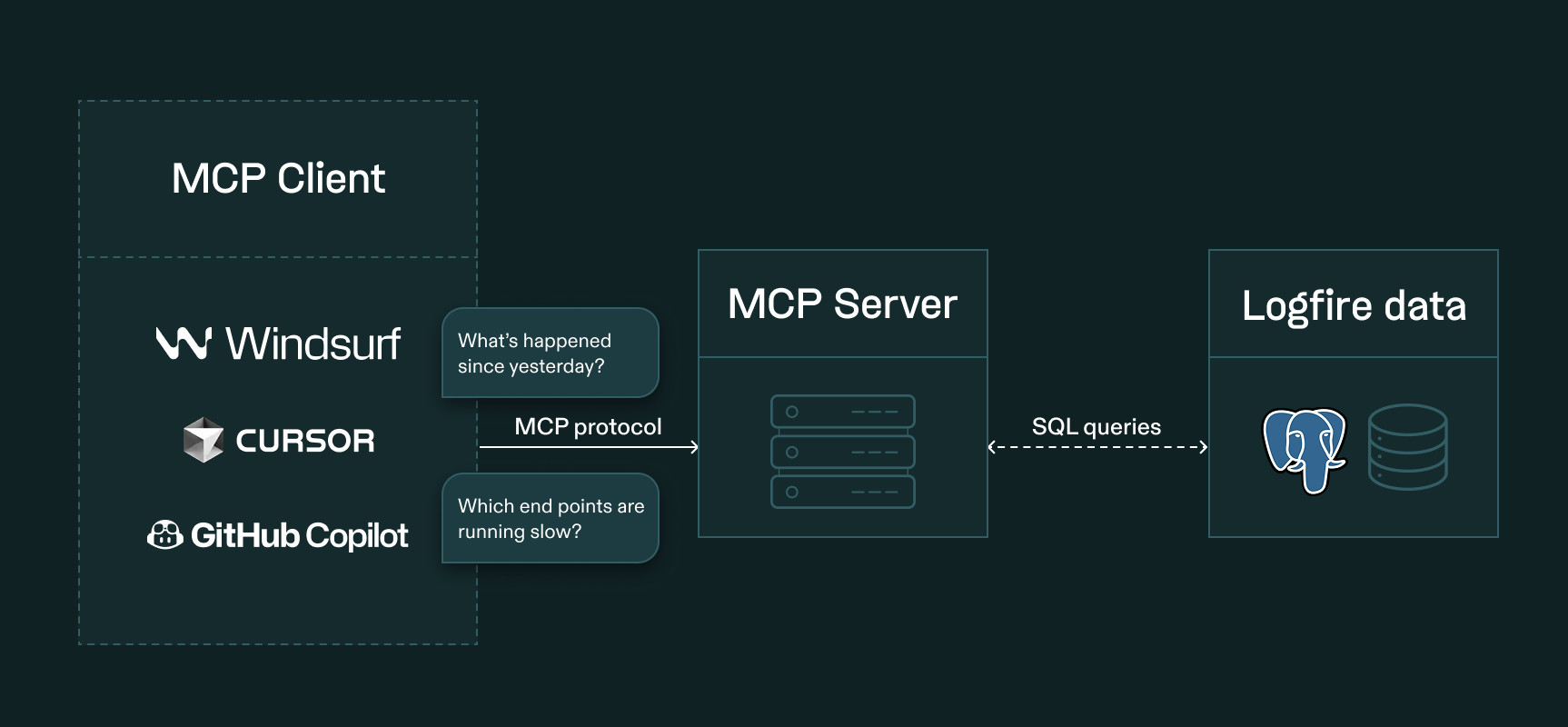Pydantic Logfire
Logs, traces and metrics-
from local to prod.
See exactly what your apps and LLMs are doing, while you code. Built on open standards (OpenTelemetry), Pydantic Logfire offers native AI integrations—from LLM API calls to agent frameworks. Plus comprehensive observability for any workload in any language, AI or not.
Companies who trust Pydantic Logfire
Visualise your whole app, not just LLM calls
Pydantic Logfire delivers entire application traces, logs and metrics, not just the LLM calls. You’d be surprised how often the slow-down is found in the seams between tools. You want full visibility, from network calls to database queries to third party APIs. Take the guesswork out of debugging, catch bugs as you code.
INTRODUCING LOGFIRE
A more intuitive way to understand your
Pydantic Logfire is a window into the inner workings of your application. Smooth to set up and easy to understand, with ready integrations for many popular libraries.
Insights
Query your data with full SQL
Query your data with full Postgres flavored SQL — all the control and (for many) nothing new to learn. Even if you don’t like writing SQL, LLMs do, so SQL plus an MCP server lets your IDE use Pydantic Logfire as a window into your app’s execution. Search for obstacles and opportunities, as you (or the AI) writes code.

From local to prod
See your application traces appear in real time. Spin up Pydantic Logfire in your local development environment and carry it through your entire dev-lifecycle, from initial debugging to production monitoring. The same observability platform that helps you catch bugs as you code keeps your production systems healthy too. No tool switching, no context loss, no friction.
Built on open standards, usable in 3-10 LOC
Pydantic Logfire is built on OpenTelemetry , which you’d expect for a modern observability tool. What you might not expect is how verbose it can be to work directly with OTel’s SDKs, compared to our custom streamlined and ergonomic SDKs for Python, Rust and Typescript. Plus, our SDKs make the live view more powerful, like rendering spans before they’ve completed.
import logfire
logfire.configure()
logfire.info('Hello, {name}!', name='world')
Visibility is more than classic Observability
Beyond devops and responding to incidents, for quality over time you also want integrated analytics. You should be able to use the same view to see exceptions and why a customer downgraded. Or see a chart of payment volume in the same dashboard that shows you a chart of API response times. Pydantic Logfire is flexible and powerful enough to do both so you can understand your code and visualise its impact.
Integrates with the tools you love
Get a robust, consistent view into your application, regardless of your stack.
logfire.instrument_system_metrics()
logfire.instrument_pydantic_ai()
logfire.instrument_pydantic()
logfire.instrument_mcp()
logfire.instrument_fastapi(...)
logfire.instrument_openai()
logfire.instrument_openai_agents()
logfire.instrument_anthropic()
logfire.instrument_httpx()
logfire.instrument_requests()
logfire.instrument_aiohttp_client()
logfire.instrument_django(...)
logfire.instrument_flask(...)
logfire.instrument_starlette(...)
logfire.instrument_asgi(...)
logfire.instrument_wsgi(...)
logfire.instrument_psycopg()
logfire.instrument_asyncpg()
logfire.instrument_sqlite3()
logfire.instrument_redis()
logfire.instrument_mysql()
logfire.instrument_pymongo()
logfire.instrument_sqlalchemy(...)
logfire.instrument_celery()
logfire.instrument_aws_lambda(...)
Logfire is already making developers' lives easier
FOR DEVELOPERS
Ready to start building?
Logfire’s Python SDK is open source under the MIT license and wraps the OpenTelemetry Python package. By default, it will send data to the Logfire platform but you could send data to any OpenTelemetry Protocol (OTLP) compliant endpoint.